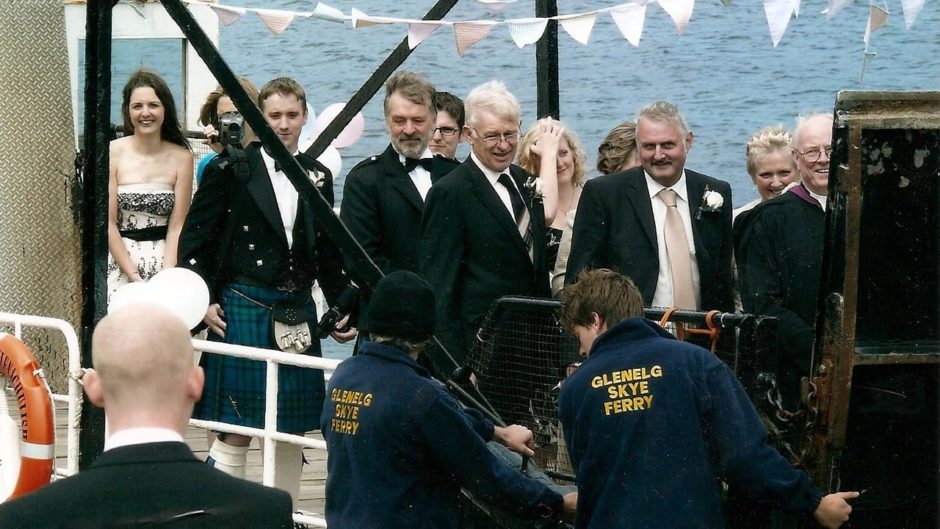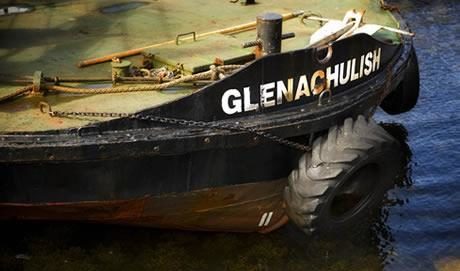As this ancient ferry crossing re-opens after a year of lockdown, Felicity Donohoe talks to general manager Jo Crawford about the role of the iconic ferry in the community.
When Jo Crawford gave up her job as a secondary school teacher in Aberdeenshire to move back to the west coast, little did she realise that 16 years later she would be general manager at one of Scotland’s most iconic crossings – the Skye Ferry.
Working amidst the most stunning scenery the country has to offer, Jo traded essay-marking and school bells for life as a ropehand at the crossing. Used for hundreds of years by locals to connect to the mainland, the community-owned ferry now operates through the summer, from April to October, serving 36,000 passengers a season and 15,000 cars, and offering island residents a much-needed short cut to essential services and shops during the summer.
It wasn’t a job she had anticipated doing, but Jo took to the life like a duck to water.
She said: “I wanted to come back to the west, naively thinking I’ll pick a teaching job. Of course, its not that simple; there aren’t that many schools and there aren’t that many jobs.
“So the ferry had an opening for a ropehand. I was fairly fit, and I thought yep, I can do that. I used to just jump on and tie the boat up. I did that for one-and-a-half seasons and then I joined the board of directors. After that and I was business development manager for a few years and now I’m the general manager.
“I clawed my way up from hauling the rope around to running the company!”
Last of its kind
The vessel, the MV Glenachulish, which restarted services earlier this month, is a turntable ferry, turning upon its upper axle to align the boat to the dock and allowing cars and passengers to disembark safely. The last of its kind in the world, the vessel was built in 1969 for service at Ballachulish. It is now over 50 years old and in 2019 it was registered with National Historic Ships.
She’s a special old boat for all sorts of different reasons: because she’s very old and because she’s the last one you can see anywhere – and we’re looking after her
The Glenachulish offers something truly unique to visitors. It is a job Jo would never swap and a responsibility to the island’s heritage that she takes very seriously.
“She’s a special old boat for all sorts of different reasons: because she’s very old and because she’s the last one you can see anywhere – and we’re looking after her,” says Jo.
“When we bought the boat, she was pretty battered and needed a lot of work in order to make sure she was sailable for the next 50 years. That was a massive challenge, making sure we had enough money to do that, because without a ferry we don’t have a service.”
The ferry’s role in the community was forefront in Jo’s mind when lockdown happened, along with deciding when – or if – to reopen.
Jo said: “With the ferry operating, it’s really a big invitation – ‘Hi, come to Skye!’ – and we felt that people just weren’t happy with that at the time. In hindsight, it was the right decision.”
Not just for tourists
The ferry attracts more than just casual tourists and passengers. Jo often finds there are wedding receptions to be arranged on the boat, having to accommodate large group numbers; on one occasion, a film crew from The One Show, dozens of school children visiting a newly-opened eagle hide on Skye and a peleton of unicylists – all in the same day.
“You couldn’t make it up,” she laughs. “The skipper was getting very frustrated but we got there in the end.”
We needed to make sure that we trained local people who lived and were able to work here in order to make the service sustainable
The ferry has a turnover of £200,000 per year, much of it from passenger receipts but also local fundraising – and everyone gets involved. Slipway events, barbecues, merchandise with an honesty box, and the locally run Way Out West cafe on the shore, all contribute to the ferry’s survival.
Not all plain sailing
It is clear that the Glenachulish means much more than a convenient transport option for the people who live there, but it’s not all plain sailing. The future of the unsubsidised service was thrown into doubt after the bridge opened in 1995, and was rescued by a £60,000 Lottery grant in March 2007 with ownership transferred to the Skye Ferry Community Interest Company.
Jo said: “When we took her on we had two skippers, Donnie McDonald, who is our senior skipper and worked for the previous owner, and his brother Colin. They are hugely experienced seamen.
“But we needed to make sure that we trained local people who lived and were able to work here in order to make the service sustainable.”
The vessel now has four local skippers including Callum, plus its first female skipper, Isabelle Law.
“Izzy’s story is a really charming and wonderful one,” says, Jo. “She was a young lassie that lived on Kyle Rhea on the Skye side with her folks and just had a total fascination for the ferry. She used to come down as 10-year-old and wanted to go back and forth on the ferry all the time with the crew. She was a quiet wee thing but she just loved it.
“Her folks got to know the ferry crew very well and were happy to entrust her to their care for most of every day – certainly every day of the summer holidays – and every single weekend when she was at school.”
A first for the ferry with a young female skipper
The young stowaway continued travelling the ferry all through secondary school before becoming employed as a ropehand.
“She was keen that one day she’d be able to drive the boat, ” says Jo. Sure enough, 10 years later, Izzy achieved her skippers’ licence and now, at the age of 23, continues to skipper alongside mentors Donnie and Colin aboard the vessel she loved as a child.
Achieving the licence was “No mean feat,” adds Jo. “This is a really difficult stretch of water to navigate. We’re all really proud of her.”
The tides and wind factors combine to make the narrow crossing very tricky, and weather and environment can impact even basic issues, such as receiving signals to process electronic card payments. Jo points out that at times the ferry may have to idle in the channel until a signal can be found to allow the transactions to process.
It’s just one of the many quirks that passengers have come to love about the Skye Ferry, and one of the challenges, too. On those that lie ahead Jo says: “Making sure we have enough money to do the required work on the vessel.”
A service in safe hands
With the weather improving in the new season, passenger numbers are now picking up and Jo and the crew are thrilled to welcome back tourists. It seems clear that the future of the Glenachulish is in safe hands.
“It is wonderful to see people’s joy at discovering our small corner of the Highlands and the ferry, of course, and to see the return of visitors once again,” she said.
“We are very aware of our guardianship of this beautiful old boat, and it’s the only one left in existence. It’s a piece of living history.”









